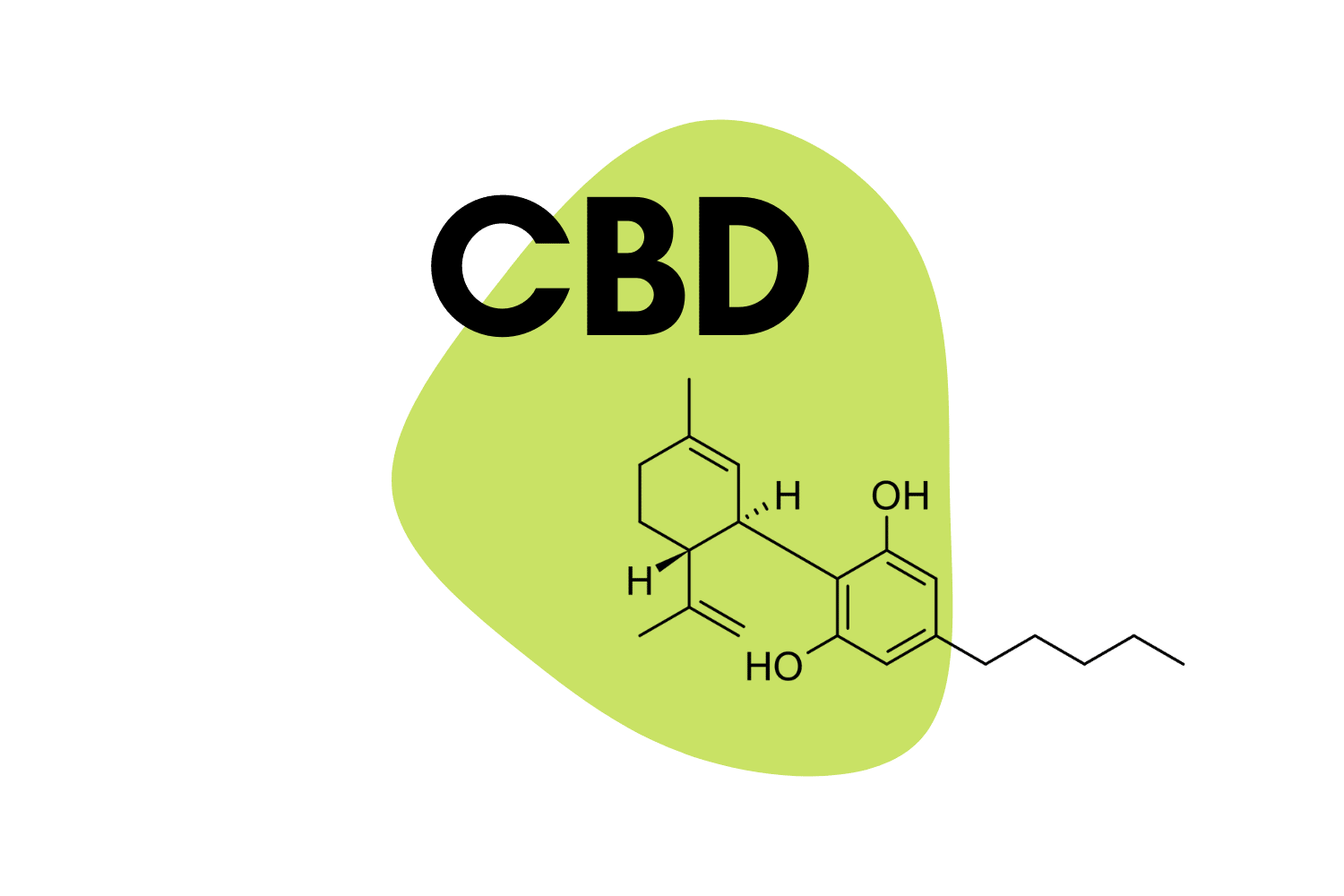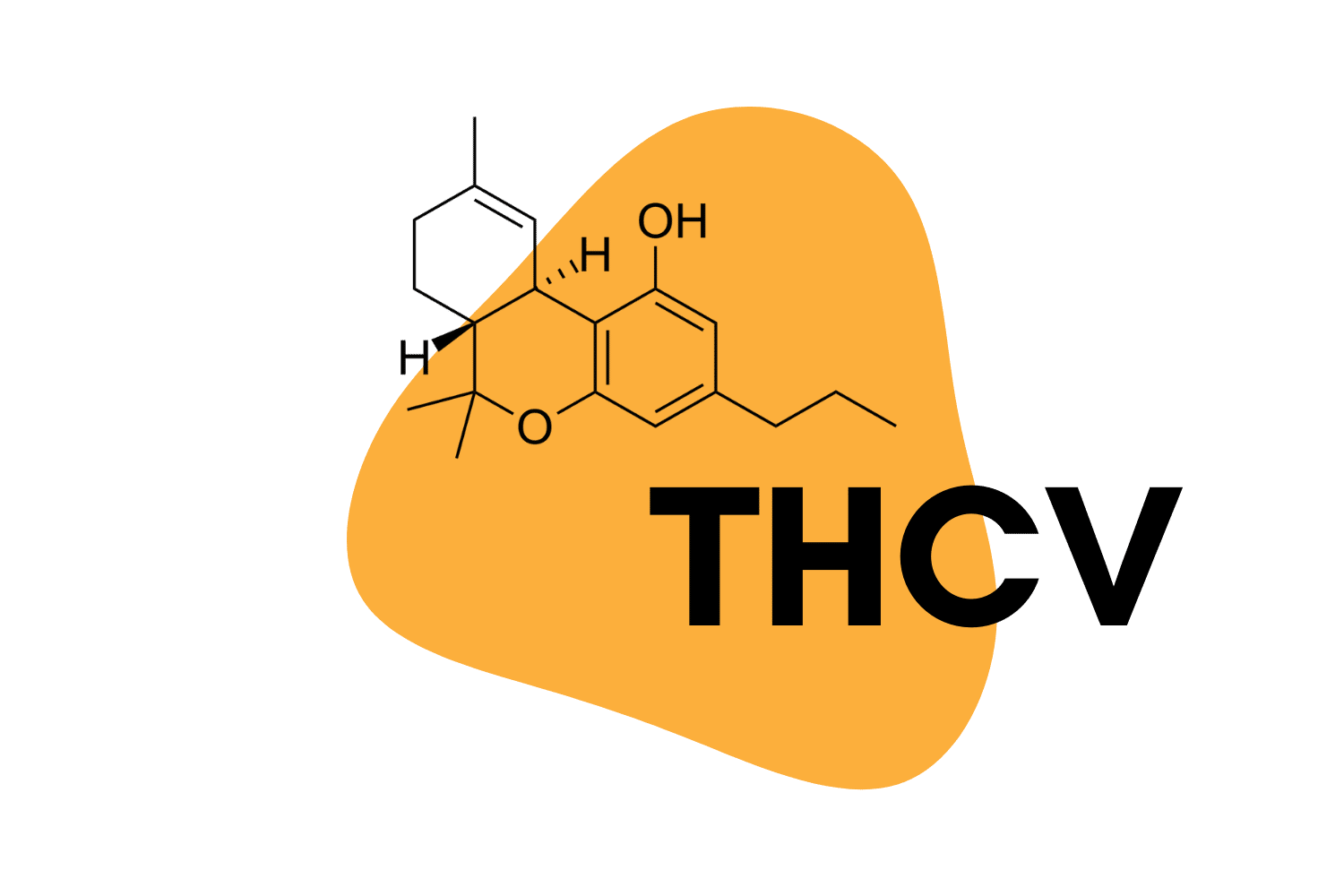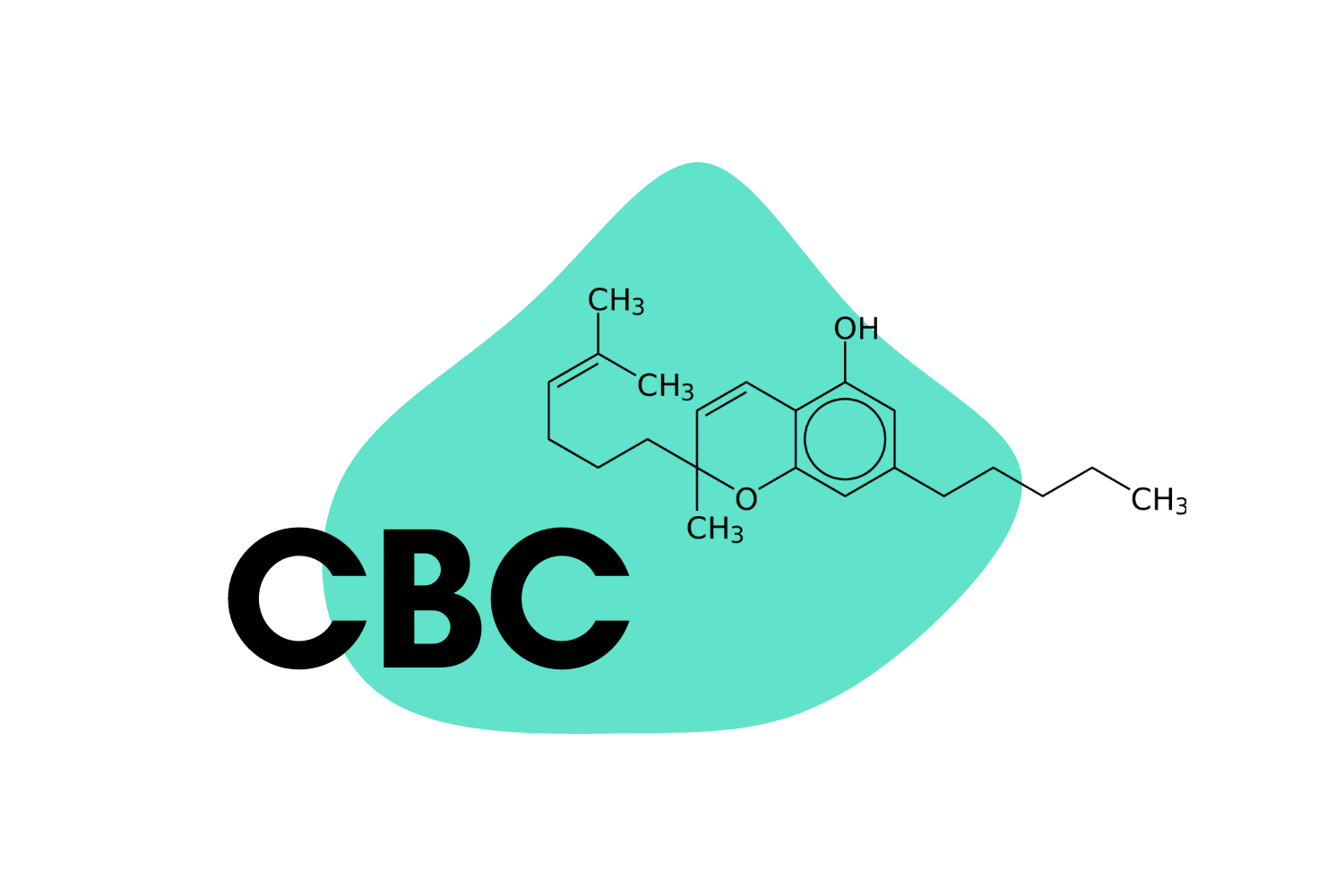What Is CBN? Uses, Benefits & Risks
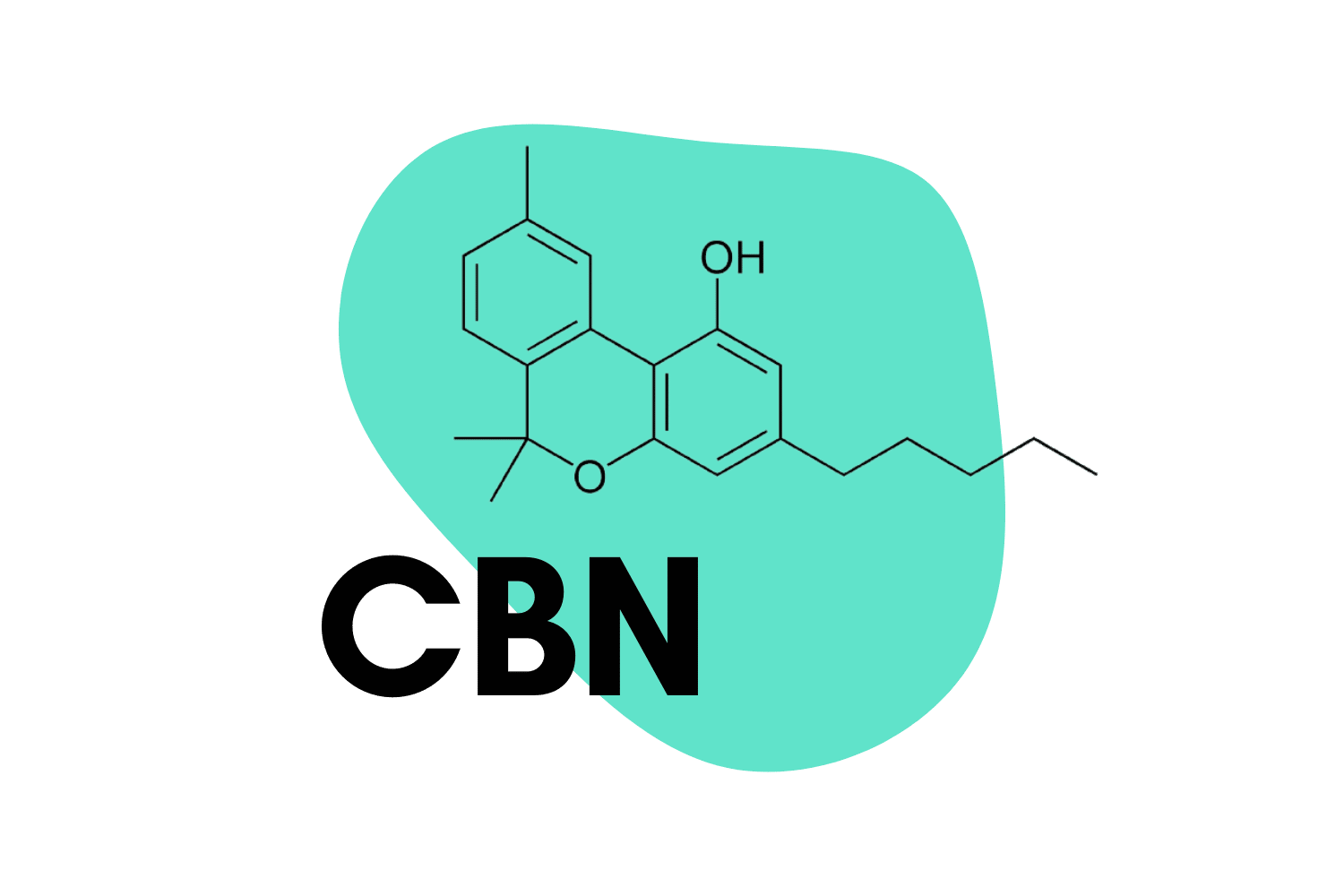
CBN (cannabinol) forms as a byproduct as THC breaks down. This unique cannabinoid shares about 10% the psychoactivity of THC and offers a few unique effects of its own.
Below, you’ll read all about CBN, including how it works, what it feels like, and what benefits are associated with its use.
What Is CBN?
Cannabinol (CBN) is a minor cannabinoid present in both marijuana and hemp plants. It’s formed as delta 9 THC (tetrahydrocannabinol) breaks down and is therefore much more abundant in marijuana plants. As weed ages, the THC content drops, and CBN content increases.
Much less is known about CBN than the major cannabinoids, but it’s becoming an increasingly popular option for users looking for a milder high than delta 9 THC provides and some of the potential benefits obtained by consuming CBD (cannabidiol).
Some study findings suggest CBN contributes a large portion of the sedative effects of marijuana. This could also explain why older marijuana flower delivers a stronger “couch lock” effect than the freshly harvested flowers.
CBN is most often marketed for its relaxing effects, but it has a few other tricks up its sleeve as well. It’s analgesic like other cannabinoids, as well as offering anxiolytic and potent neuroregulatory benefits that may offer value in the treatment of neurological disorders such as ALS and Parkinson’s disease.
More research is needed to fully understand the extent of benefits offered by this unique cannabinoid.
Where Does CBN Come From?
All cannabinoids are believed to come from cannabigerolic acid (CBGa), which is considered the “mother of all cannabinoids.” CBGa is produced by cannabis plants, including those under the subcategories of marijuana and hemp. Natural enzymatic activity converts CBGa to THCa, CBDa, and CBCa. The ratio of each cannabinoid produced depends on the individual genetics of the plant.
Marijuana plants contain more enzymes that convert CBGa to THCa, while hemp primarily converts CBGa to CBDa instead.
CBN is formed as THCa, and THC breaks down naturally. Exposure to light, heat, and oxygen all-cause THC to degrade into CBN. A small fraction of this THC degrades into another cannabinoid called delta 8 THC instead.
Is CBN Natural?
Yes, CBN is entirely natural, just like all other phytocannabinoids.
CBN is produced indirectly by the degradation of THCa. Cannabis growers optimizing for CBN content will allow their plants to over-ripen. THC levels start to decline, and CBN levels rise.
CBN can also be “artificially” produced by purposefully exposing mature cannabis plants to UV radiation. Even in doing so, the process by which CBN is produced is natural, so CBN in no way is an unnatural or synthetic cannabinoid.
Is CBN Psychoactive?
CBN is considered mildly psychoactive. You need to take a lot of it to feel any psychoactive effects.
You’ll need to take roughly ten times the dose of delta 9 THC to receive a similar level of effects with CBN. You’d need to take roughly 50 mg of CBN to feel the same level of psychoactive effects as 5 mg of delta 9 THC.
The effects of CBN are comparable to THC — resulting in an altered perception of time, heightened sensory perception, enhanced creativity, feelings of dissociation from the rest of the body, a sense of relaxation, and more. Users also report an increase in heart rate, lethargy, and sedation.
The sedative “couch lock” nature of CBN gives it a more lucid feel than other cannabinoids. It’s not as useful for studying or working but is a great option to use in the evenings before bed.
Is CBN Legal?
CBN, as an individual cannabinoid, is not specifically illegal in most parts of the world, including the United States.
Hemp-derived CBN is legal in all 50-states, while marijuana-derived CBN is only legal in states that have passed recreational marijuana laws.
Since CBN is a byproduct of THC, it’s much easier to extract from marijuana plants. To get around this, most companies don’t extract CBN directly from the plant. Instead, they extract CBD from hemp and convert it to CBN through a process called isomerization.
Related: What’s the Difference Between Legalization & Decriminalization?
How Does CBN Work?
CBN works by interacting with the endocannabinoid system, a natural signaling system in the body involved with a process called homeostasis (balance). Because CBN (and other cannabinoids) work on a system tasked with regulating other body systems, it’s able to offer an impressive range of therapeutic benefits.
The endocannabinoid system has two primary cannabinoid receptors, classified as CB1 and CB2 receptors. These receptors are meant to receive endocannabinoids, natural chemicals produced by the body for regulation purposes. CBN fits into CB1 and CB2 receptors, causing them to become active.
CBN has been shown to have a greater affinity for CB2 receptors, which is more closely linked to the peripheral nervous system and immune system. Activation of the CB2 receptors results in reduced inflammation, enhanced antioxidant protection, changes in cellular signaling and pain transmission, and much more.
CBN also binds weakly with CB1 receptors, which are located in the central nervous system (brain and spinal cord). Activation of these receptors produces CBNs mild psychoactive capabilities and interacts with mood, focus, and sleep.
What Are the Benefits of CBN?
CBN is rarely used for its psychoactive effects. Those seeking a high who can get CBN legally can also get delta 8 THC or delta 9 THC legally, both of which produce a much more potent psychoactive effect. However, some users prefer the mild nature of CBN or seek some of its other benefits.
CBN is perhaps most commonly used as a mild sedative or sleep aid to treat insomnia and sleeplessness [1].
Like many other cannabinoids, CBN has shown promise as an analgesic and anti-inflammatory [2]. It’s used by many people who deal with mild to severe pain symptoms, especially those who aren’t looking for intoxication or a high along with their pain relief. It’s a popular treatment option for patients with Crohn’s disease, arthritis, and other ailments that produce inflammation-related discomfort.
Additionally, preliminary research suggests that CBN has neuroprotective qualities [3]. Some studies suggest CBN could be a future treatment option for symptoms related to Parkinson’s disease, Huntington’s disease, multiple sclerosis, and amyotrophic lateral sclerosis (ALS).
Is CBN Safe? What Are the Risks?
There are potential risks involved with consuming any substance, and CBN is no exception. However, the risks are relatively mild, and the potential medical benefits far outweigh the potential side effects for most users.
Short-term side effects include headaches, dry mouth, red eyes, intoxication, and increased heart rate. For most users, these side effects only appear with larger doses.
The long-term side effects of CBN consumption aren’t entirely understood yet, although the likelihood is that they are similar to those associated with long-term THC use, given the cannabinoids’ chemical similarities. There is some anecdotal evidence for reduced motivation with long-term use, as well as chronic fatigue.
The dosing method used to consume CBN can also contribute to some issues. CBN isn’t a very popular cannabinoid compared to THC, so some users smoke or vape marijuana to consume CBN. Smoking and vaping increase the risk of lung cancer and other forms of cancer and may put you at risk of pulmonary inflammation and discomfort, especially with long-term use.
What’s the Standard Dose of CBN?
There’s no standard dose associated with CBN — yet. However, with the understanding that it’s approximately a tenth as psychoactive as THC, a reasonably safe dose can be estimated.
For beginners, most users recommend a 10 mg dose to start. This provides a low level of intoxication, if any, and allows the user to assess how it affects them individually before taking more. The dose can then be increased by 5 mg per session after that until the desired results are achieved.
Experienced users or frequent CBN users typically take an average of 30–50 mg per session. With that said, it’s not uncommon for experienced users to take as much as 100 mg for a single dose.
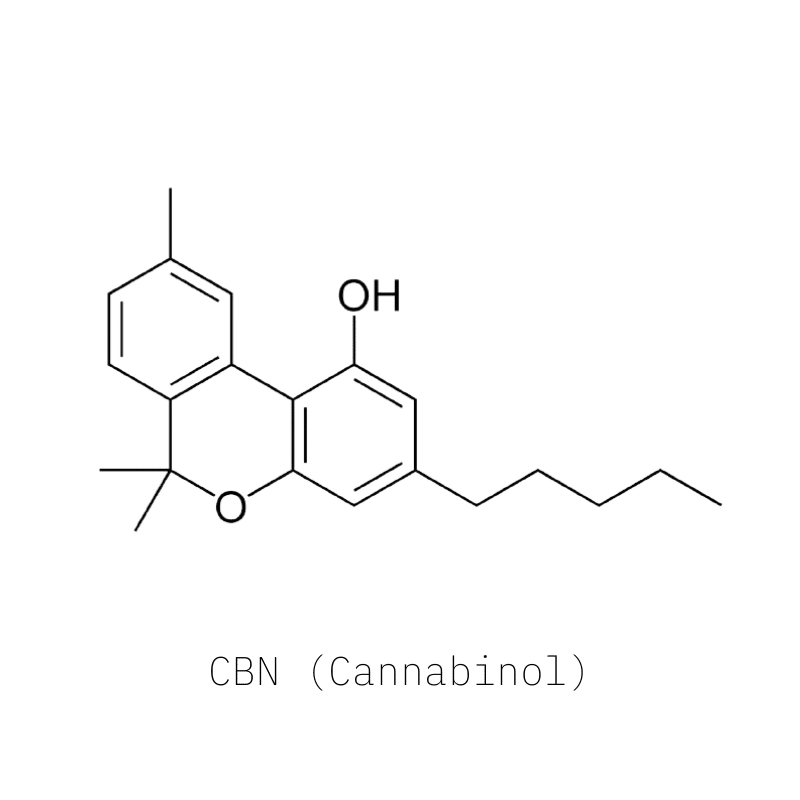
Final Thoughts: CBN, A Mildly Psychoactive Phytocannabinoid
Cannabinol (CBN) is a naturally occurring cannabinoid produced by marijuana plants. The plants create CBGa, which eventually degrades into THC, which gets converted into CBN with exposure to UV light.
CBN isn’t specifically prohibited in most countries and states in America, but it is indirectly illegal. Since it comes from marijuana plants, which are illegal in many areas, it cannot be legally produced unless in a country or state where marijuana is legal.
CBN comes with a wealth of potential medical benefits, including use as a sleep aid, pain reliever, inflammation reducer, and neuroprotective compound. Ongoing research is being done on this minor cannabinoid, and additional benefits could be uncovered in the future.
Resources Used
- Walsh, J. H., Maddison, K. J., Rankin, T., Murray, K., McArdle, N., Ree, M. J., … & Eastwood, P. R. (2021). Treating Insomnia Symptoms with Medicinal Cannabis: A Randomized, Cross-Over Trial of the Efficacy of a Cannabinoid Medicine Compared with Placebo. Sleep.
- Wong, H., & Cairns, B. E. (2019). Cannabidiol, cannabinol, and their combinations act as peripheral analgesics in a rat model of myofascial pain. Archives of oral biology, 104, 33-39.
- Stone, N. L., Murphy, A. J., England, T. J., & O’Sullivan, S. E. (2020). A systematic review of minor phytocannabinoids with promising neuroprotective potential. British Journal of Pharmacology, 177(19), 4330-4352.
